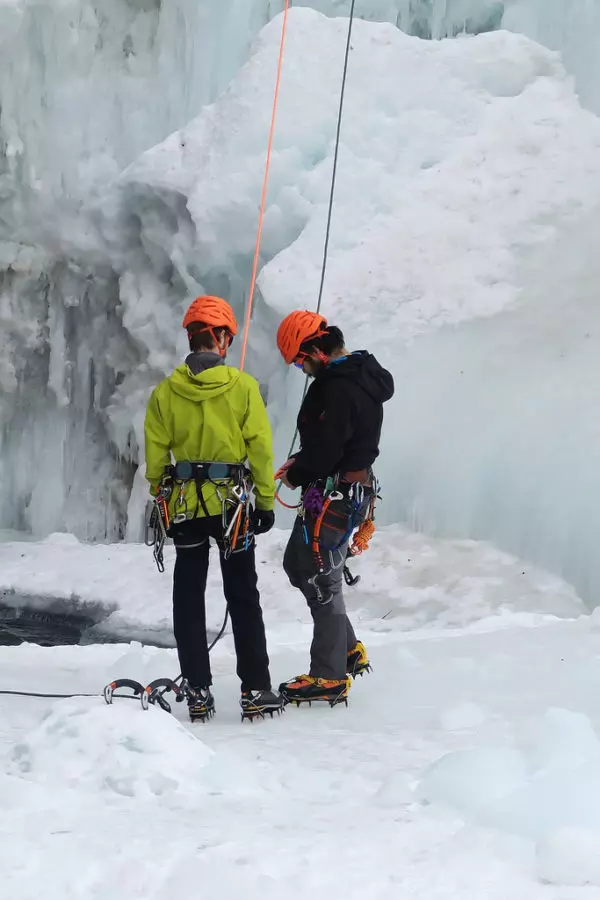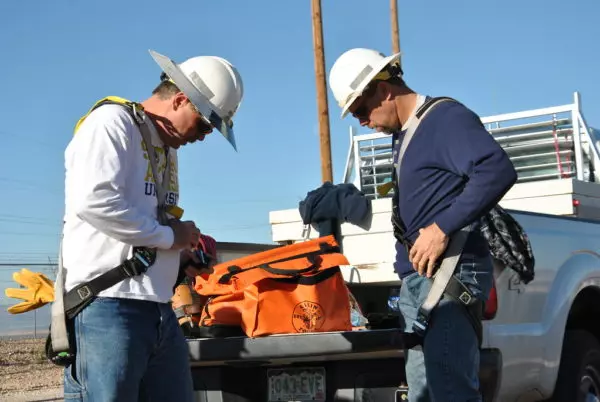The History of Fall Protection: From the Mountain to the Workplace
May 4, 2020
You’ve seen the picture. Eleven workers calmly eating lunch while they sit on a girder of the Empire State Building hundreds of feet above the streets of New York.
For some of us, images like this are like a Where’s Waldo of OSHA violations. Since that iconic photo was taken, and especially since the establishment signing of the Occupational Safety and Health Act in the 70s, fall protection has undergone a revolution.
Tracing a path from the earliest skyscrapers to modern fall protection systems shows us just how far we’ve come in terms of equipment and attitudes toward workplace safety.
In those early days, there was no regulatory framework for fall protection in the workplace. Whether you were one of the often-photographed workers on the Empire State Building, or are one of the thousands who worked unknown in manholes, fall protection was not your employer’s concern.
The prevailing view at the time was that workers took responsibility for their own safety. Unsaid at that time was the notion that these were workers on a fast-paced job site. They were required to do their jobs while also keeping themselves safe. Trying to balance these two competing interests—safety and trying to keep up with everyone else—meant that a lot of chances were taken.
We likely won’t ever know how many workers were killed or injured in this time. Statistics from the era, if they exist at all, vary greatly by source. Depending on who does the reporting, either 5, 14, or 42 workers were killed during the construction of the Empire State Building (best estimates place the number in the middle of that range).

It is around this same time that body belts began to be used on worksites. When looking for a tool to help prevent worker falls, manufacturers took inspiration from mountaineering. Climbers had long used body belts to prevent injuries while on rock faces. It didn’t take much to adapt this to workplace use.
Between the 1920s and 1970s, the popularity of body belts among workers increased, albeit slowly. Just like the name implies, body belts were worn around workers’ waists. The introduction of safety lanyards and the notion of 100% tie-offs increased their efficacy in the 70s, but body belts were plagued with problems.
If a worker fell while equipped with a body belt, the worker had to “fall correctly” (i.e., horizontally) or else they ran the risk of the belt slipping over their shoulders. If a worker doesn’t have the time or the wherewithal to ensure they fall correctly, the body belt was no help.
Additionally, especially in the early days of the body belt, workers had to manually tie and re-tie their lines. A lot of workers were frustrated by the system’s inefficiency and were discouraged from using the belt at all.
Starting in the 1940s, the safety harness appeared as the main alternative to the body belt. Inspired by equipment used by paratroopers in World War II, the fit of the harness meant that workers no longer had to worry about falling correctly if an accident were to happen.

Over time, harnesses became more and more comfortable as manufacturers realized that user-friendliness led to an increase in use. Modern harnesses can be comfortable all day.
Given their advantages, it’s no surprise that safety harnesses began to overtake body belts in popularity over the years. Due to concerns over their intrinsic safety, the use of body belts was eventually restricted by OSHA in 1998.
OSHA itself was established 1971, a result of the act signed the previous year. Fall protection was one of the first areas of concern the agency began addressing. As the agency developed regulations and collecting data, more and more employers began taking the onus upon themselves for providing fall protection systems to their workers. This represented a fundamental shift in priorities, with employers making it their responsibility to ensure their employees can go home at the end of their shift.
Other engineering advances further increased the functionality and comfort of harnesses. New fabrics and constructions made the harnesses stronger, more durable, and more comfortable. Dorsal D rings offered better weight distribution in the harness, reducing the risk of internal injury in a fall.

The same fabric advances which improved the performance of harnesses helped lanyards become stronger. The introduction of SRLs (both standard and 3-way) helped create reliable fall arrest systems that save lives and prevent injuries at job sites on a daily basis.
Fall Arrest Posts have also helped keep workers safe, and the introduction of carbon fiber has increased their strength and flexibility, and consequently, their protective ability.
Advances in rescue and recovery have allowed quick response to the falls that do occur, ensuring prompt treatment for injured workers.
It’s astonishing to think of how far we’ve come in one hundred years. From those unnamed workers sitting on that girder in the sky to the advanced technology and safety systems of today, the world of fall protection is entirely different.
Pelsue has been around for more than half of that century of massive change, and we’re proud of our own contributions to that growth. We don’t know how often a piece of our equipment has saved a life, but even once is enough.
(Sources: “A Brief History of Fall Protection”, “The History of Fall Safety & The Evolution of Personal Fall Protection Equipment,” “Empire State Building Construction.”)

